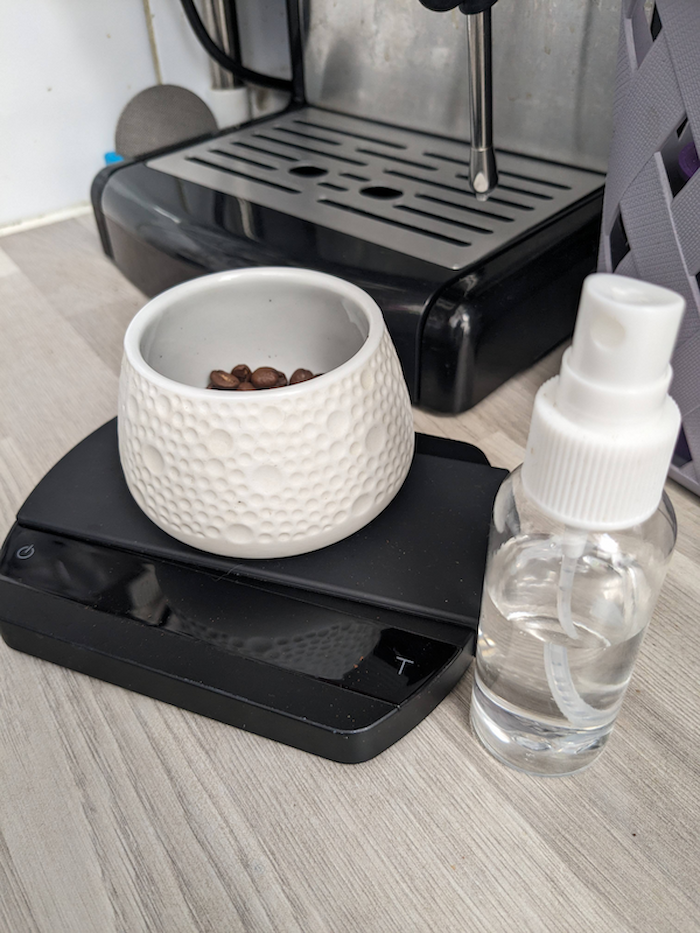For those who cherish the art of brewing specialty coffee, a coffee grinder is an indispensable tool. Yet, a common issue that many coffee enthusiasts face is the static electricity generated by these grinders. This static causes the ground coffee to stick to the grinder’s walls or its container, complicating the process of transferring coffee to the filter holder. It can even influence the taste of your coffee. But don’t worry, there’s a straightforward solution to this pesky problem: the Ross Droplet Technique (RDT).
Unraveling the Ross Drop Technique: What Is It?
Static electricity is a fascinating phenomenon that happens when objects get electrified due to friction. Take ground coffee as an example. During the grinding process, coffee particles can pick up an electrostatic charge. This electrical charge makes the ground coffee beans stick to each other and to the grinder’s walls. As a result, pouring your freshly ground coffee can become a bit of a challenge, often leading to spills or, even worse, wasted coffee.
The Ross drop technique is a clever approach designed to neutralize static charge in ground coffee. This ingenious method involves delicately spritzing or introducing a tiny droplet of water to the coffee beans prior to the grinding process. Acting as a conductor, the water effectively disperses static electricity. The result? A significant reduction in bean clumping, making your ground coffee effortlessly pourable and ready for brewing.
Mastering the Art of This Technique

Let’s dive into how you can master the Ross drop technique for your coffee grinder. It’s easier than you might think!
- Measure the quantity of coffee beans required for your preparation, according to your preferred brewing method.
- Before grinding, spray the beans lightly with water or add a small droplet of water. Be careful not to over-moisten the beans.
- Grind the coffee beans according to the appropriate settings for your method. You may notice that the beans are less clumpy and pour more easily.
- Use freshly ground coffee to prepare your favorite beverage and enjoy a delicious, flavorful cup of coffee.
Exploring the Benefits of the Ross Drop Technique
For those who cherish their cup of joe, the Ross drop technique brings a host of benefits to the table:
- Static elimination: Using this method, you can effectively eliminate the static electricity present in ground coffee. This makes it easier to pour coffee without clumping.
- Improved extraction: By reducing the clumping of coffee beans, the Ross drop technique ensures more uniform extraction. This translates into better flavor in your cup of coffee.
- Preservation of freshness: By preventing bean clumping, you preserve the freshness and aroma of freshly ground coffee beans.
- Ease of use: The Ross drip method is simple, requiring just a few extra drops of water. It can be easily integrated into your coffee-making routine.
While there are various ways to minimize static electricity in ground coffee, like employing an anti-static spray or utilizing a metal spoon to disrupt the static charge, many coffee enthusiasts often favor the Ross drip technique. It’s hailed for its simplicity and effectiveness in tackling this common coffee conundrum.
Additional Friendly Advice to Ward Off Static Electricity
Let’s dive into a few more handy hints to help you avoid static electricity while grinding your coffee:
- Store coffee beans in an airtight container to reduce exposure to humidity and dry air, which can promote static electricity.
- Avoid grinding too quickly or at high speed, as this can create more static electricity.
- Clean your coffee grinder regularly to remove the build-up of ground coffee that can contribute to bean clumping.
The Ross drop technique is a straightforward yet potent method to banish static electricity from your coffee grinder. By merely spritzing or introducing a tiny droplet of water to your coffee beans, you can mitigate clumping, facilitate the pouring of ground coffee, and enhance the taste of your brew. Give this technique a whirl the next time you’re brewing, and savor an elevated coffee-tasting experience.

Will the Ross drip technique damage my coffee grinder? No, the Ross Drops technique should not damage your coffee grinder. It simply involves adding a small amount of water to the coffee beans to eliminate static electricity. Just be careful not to over-moisten the beans.
Does the RDT technique alter the taste of the coffee?
No, on the contrary. RDT improves coffee extraction by reducing the clumping of ground coffee beans. This results in a more uniform extraction and better flavor in your cup of coffee.
Can I use the RDT technique with any type of coffee grinder? Yes, the Ross drop technique can be used with most coffee grinders, whether manual or electric. Simply add a small amount of water to the beans before grinding.
Is there a specific amount of water to add?
There is no specific amount of water. Simply spray the beans lightly with water, or add a small droplet of water. The aim is to dissipate static electricity without over-moistening the beans.
Does the Ross drip technique work with all coffee preparation methods? Yes, the Ross drip technique can be used with a variety of methods. It is particularly useful when using freshly roasted coffees.

Leave a Reply